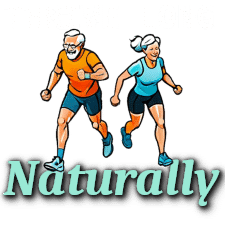Neurobic Exercises to Challenge Your Brain
Imagine your brain as a muscle. Just like your body benefits from physical exercise, your brain thrives on mental workouts. Forget crossword puzzles alone – we're diving into the world of neurobics, a revolutionary approach to brain training that engages all your senses and shakes up your routine. Are you ready to unlock a sharper, more agile mind? Let's explore the exciting realm of neurobic exercises and how they can transform your cognitive abilities.
What are Neurobic Exercises?
Neurobics, a term coined by neurobiologist Lawrence Katz and science writer Manning Rubin, refers to exercises designed to stimulate the brain by using your senses in novel and unexpected ways. The core principle is to break routine and engage multiple senses simultaneously, forcing the brain to create new neural pathways. Unlike traditional brain games that primarily target logic and memory, neurobics aim for a more holistic workout, enhancing attention, creativity, and overall cognitive function.
The Science Behind Neurobics
The brain is incredibly adaptable, a quality known as neuroplasticity. This means that the brain's structure and function can change over time in response to experiences. Neurobic exercises leverage neuroplasticity by challenging your brain with unfamiliar sensory input. When you engage multiple senses simultaneously, you're essentially forcing different areas of your brain to communicate and work together. This strengthens existing neural connections and encourages the formation of new ones.
Think of it like creating new roads in a city. The more roads there are, the easier it is to get around, and the more connected the city becomes. Similarly, the more neural pathways you have, the more efficiently your brain can process information and respond to challenges.
Benefits of Regularly Challenging Your Brain
Incorporating elements that lead to some degree of cognitive load, is a solid approach to improving the efficiency of your mind.
- Improved Memory: Neurobic exercises can help strengthen memory by creating new associations and pathways in the brain.
- Enhanced Focus and Attention: By challenging your brain to pay attention to new sensory details, you can improve your ability to focus and concentrate.
- Increased Creativity: Breaking routine and engaging your senses in new ways can spark creativity and help you think outside the box.
- Better Cognitive Function: Regular neurobic exercises can help maintain and improve overall cognitive function, protecting against age-related decline.
- Stress Reduction: Engaging in novel and stimulating activities can be a fun and effective way to reduce stress and improve mood.
Examples of Neurobic Exercises You Can Try Today
The beauty of neurobics lies in its simplicity and accessibility. You don't need fancy equipment or specialized training to get started. Here are some examples you can easily incorporate into your daily life:
Sensory Switch-Ups
These exercises involve altering the way you use your senses.
- Brush your teeth with your non-dominant hand: This forces your brain to pay closer attention to the movements involved and can improve motor skills.
- Shower with your eyes closed: Rely on your sense of touch to navigate and identify the different products you use.
- Eat a meal blindfolded: Focus on the tastes, textures, and smells of your food, heightening your sensory experience.
- Listen to music you usually wouldn't: Expose yourself to new genres and styles to challenge your musical preferences and expand your auditory horizons.
Routine Breakers
These exercises involve disrupting your normal routines and patterns.
- Take a new route to work or school: Explore different streets and neighborhoods to stimulate your sense of direction and spatial awareness.
- Rearrange your furniture: Changing your environment can create new visual stimuli and challenge your brain to adapt.
- Shop at a different grocery store: Expose yourself to new products, layouts, and sensory experiences.
- Strike up a conversation with a stranger: Engaging with someone new can challenge your social skills and broaden your perspective.
Multisensory Challenges
These exercises engage multiple senses simultaneously in unexpected ways.
- Read aloud while smelling something unfamiliar: Combine auditory and olfactory stimulation to create a unique sensory experience.
- Listen to a podcast while doing a jigsaw puzzle: Engage both your auditory and visual processing skills.
- Cook a new recipe while listening to a foreign language: Challenge your senses of taste, smell, and hearing simultaneously.
- Draw or paint while listening to music: Combine auditory and visual creativity to stimulate different areas of your brain.

Creating Your Own Neurobic Exercises
The key to effective neurobics is novelty and surprise. Don't be afraid to get creative and experiment with different combinations of sensory input. Here are some tips for designing your own neurobic exercises:
- Think about your daily routine: Identify areas where you can introduce small changes and disruptions.
- Engage multiple senses: Try to find ways to combine different senses in unexpected ways.
- Challenge yourself: Choose activities that are slightly outside of your comfort zone.
- Make it fun: The more you enjoy the exercise, the more likely you are to stick with it.
- Be consistent: Regular neurobic exercises are more effective than sporadic ones. Aim for at least 15-30 minutes of brain training per day.
Neurobics vs. Traditional Brain Games
While traditional brain games like Sudoku and crossword puzzles can be beneficial for cognitive function, neurobics offer a different approach. Traditional brain games primarily target logic, memory, and problem-solving skills. They often involve repetitive tasks that can become less challenging over time as you get better at them. Neurobics, on the other hand, focus on engaging multiple senses and breaking routine, which can lead to a more holistic workout for the brain. Both types of exercises can be valuable for cognitive health, and incorporating both into your routine can provide a well-rounded brain training program.
Precautions and Considerations
While neurobic exercises are generally safe and beneficial, there are a few precautions to keep in mind:
- Start slowly: If you're new to neurobics, start with simple exercises and gradually increase the difficulty as you get more comfortable.
- Listen to your body: If you experience any discomfort or dizziness, stop the exercise and rest.
- Be mindful of your surroundings: When performing exercises that involve sensory deprivation, such as showering with your eyes closed, be sure to do so in a safe and controlled environment.
- Consult with your doctor: If you have any underlying medical conditions, such as epilepsy or sensory processing disorders, talk to your doctor before starting a new neurobic exercise program.
Incorporating Neurobics into Your Lifestyle
Making neurobics a regular part of your lifestyle doesn't have to be a chore. Here are some tips for seamlessly integrating these exercises into your daily routine:
- Turn everyday tasks into neurobic opportunities: Find creative ways to challenge your brain during activities like commuting, cooking, or cleaning.
- Make it a social activity: Engage in neurobic exercises with friends or family members to make it more fun and engaging.
- Set realistic goals: Start with small, achievable goals and gradually increase the intensity and duration of your exercises.
- Track your progress: Keep a journal or use a brain training app to monitor your progress and stay motivated.
- Celebrate your successes: Reward yourself for reaching your goals and acknowledge the positive changes you're experiencing.
The Future of Neurobic Exercises
As our understanding of the brain continues to evolve, so too will the field of neurobics. Researchers are constantly exploring new ways to stimulate the brain and enhance cognitive function. In the future, we may see more personalized neurobic programs that are tailored to individual needs and preferences. We may also see the development of new technologies that can be used to enhance sensory stimulation and brain training. Neurobics holds immense promise for improving cognitive health and enhancing our overall well-being.
Final Thoughts
Neurobic exercises offer a simple yet powerful way to challenge your brain, boost your cognitive function, and unlock your creative potential. By breaking routine, engaging your senses in new ways, and making brain training a regular part of your lifestyle, you can cultivate a sharper, more agile mind that's ready to take on any challenge. So, are you ready to ditch the mundane and embrace the exciting world of neurobics? Your brain will thank you for it!

